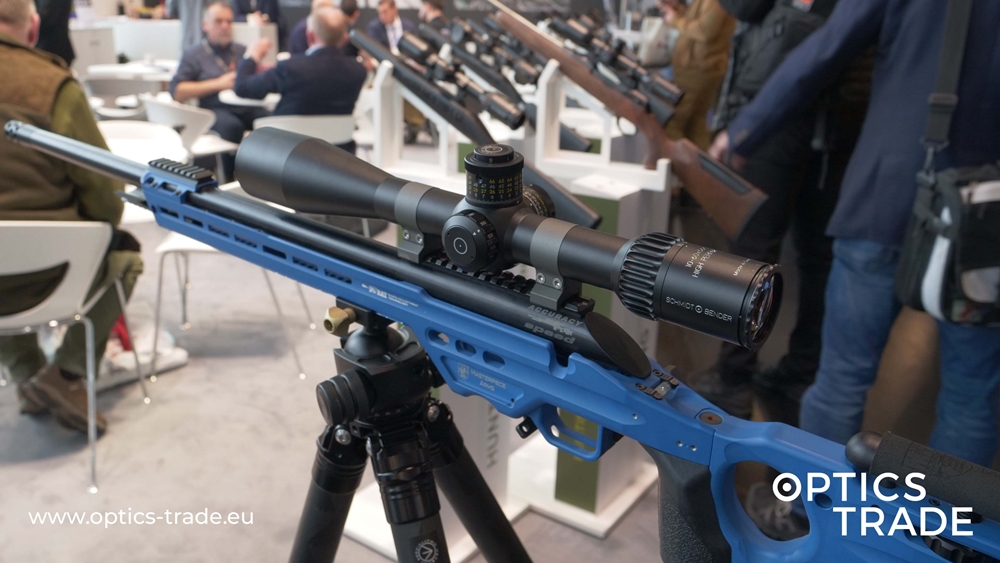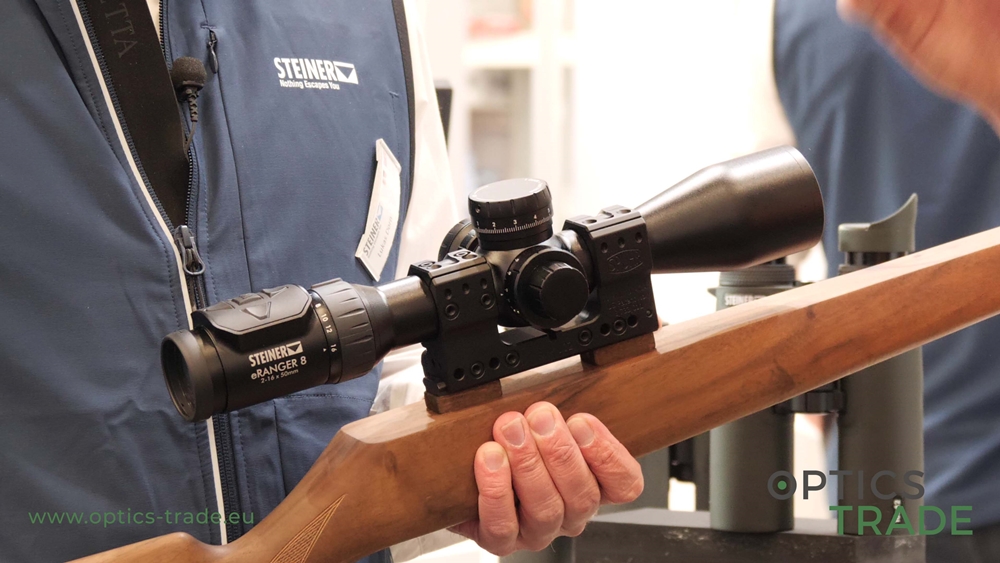Hello. Welcome to another episode of Optics Trade Debates. We are still on the topic of Leica and their riflescope series – this time the ER series, which, at the moment, features only one model.
Let us begin this debate with an introduction to how this series came to be. The ER series is quite old; this is the only Leica product that does not carry a fancy name in terms of riflescopes (like the Magnum and Visus). Like other ER models, it features a 4x zoom, no illumination, and it is made in Portugal. The difference with this model (6.5-26×56) is that it is quite big and heavy, compared to most other ER and Visus scopes, which are heavy and compact.
The model measures 39 cm and weighs 750 g. It has a 30 mm tube, and it is available only with the ring-mounting option. Other external features include a rubberized magnification ring, as well as the windage turret – the same as on Magnus. It has an open tactical turret – not a ballistic one. It also has a side parallax, which is normal for a scope with this magnification. The parallax goes from 50 m to infinity and at the moment, the scope is available with 2 or 3 different reticles.
We can also add that it has a zero stop and that it is a single-turn turret. Let us return to the tactical turret, as it needs a bit more explanation. This scope is tactical because it has marked clicks. From the markings, you can find out the clicks, not the distances. But with the ballistic turret (like the Magnus series has), you are able to put a ring on it, which tells you the distance – the ring always matches your ballistic curve.
This scope comes with only one turret; there is no possibility of obtaining additional rings on it. One click is 0.5 cm or 0.05 MIL, so the clicks are very precise. There are 70 clicks in one revolution, so there is approximately 35 cm of elevation travel on 100 m. Thus, we could say that the turret is precise, but with a limited elevation range in one turn. What is also interesting is that Leica does not give out information about the total internal elevation range – presumably, it is not that big.
What is a plus is the zero stop, and having only a single turn, so it is impossible to get lost – it is the easiest way to use it. Staying on the topic of physical characteristics, Leica uses AquaDura Coating on this model; they apply it on the external part of the lenses, and this repels water particles, dirt particles, and if you exhale on the lens, you will see that the trace quickly disappears – you are able to use it even if warm air touches a cold scope.
Let us turn our attention to the optical features of the scope – it goes from 6.5 to 26. The zoom factor is 4x and optically, it is pretty decent. There is a bit of tunnel effect (it is not as forgiving as on Magnus). It also has a 100 mm of eye relief, which means that you can even use it on extremely powerful calibers – even stronger than .300 Winchester Magnum – there is enough eye-relief that the scope never hits you.
It lacks illumination, like the previous ER scopes. But since this is intended for day-time long-range hunting, like Chamois hunting in the mountains, it does not need illumination. Including it would certainly make it a better scope since it only has a 4x zoom and a 56 mm objective lens, but it still performs well in twilight – if you put it on 8x magnification, or 20x, 26x, just to see the details (not to shoot). On 26x magnification, you are able to judge what kind of an animal you are looking at even on a 200 m distance, without a problem. You can also take confident shots up to 500 m. This scope was purposely built for long-range hunting.
The philosophy behind long-range hunting is clear: high magnification (so you are able to judge the details), a tactical turret (which enables you to shoot accurately up to 500 m), and parallax adjustment. Overall, it has everything needed. Leica does not need a bigger elevation adjustment because their core philosophy is that if you hunt long-range, you should not shoot on a too far distance (it has to be within an ethical range).
We can conclude by saying that this is a scope intended for long-range hunting for distances up to 500 m, maybe 600 m, if your bullet trajectory allows it. The scope will not perform well regarding other purposes than hunting. The magnification is already so high that the field of view is quite narrow – on all magnification settings, the field of view is not the best when it comes to the Leica ER. It is meant for stalking in the mountains and shooting at greater distances, and also for using it in combination with their laser rangefinding products like the Rangemaster or Geovid – then, it excels in terms of performance.
This brings us to the end. If you enjoyed this video, hit the like button, subscribe to our YouTube channel, and check out our other videos on Leica products. See you next time, bye.
Products mentioned in the Leica ER riflescopes debate:
Leica ER riflescopes: https://www.optics-trade.eu/en/manufacturer-leica/riflescope_series-leica_er.html
Leica riflescopes: https://www.optics-trade.eu/en/riflescopes/shopby/manufacturer-leica.html
Follow us on social media:
Facebook: https://www.facebook.com/OpticsTrade/
Instagram: https://www.instagram.com/opticstrade.hunting/
Blog: http://optics-info.com/
Flickr: https://www.flickr.com/photos/opticstrade/albums
Pinterest: https://www.pinterest.co.uk/opticstradeeu/
LinkedIn: https://www.linkedin.com/company/optics-trade




